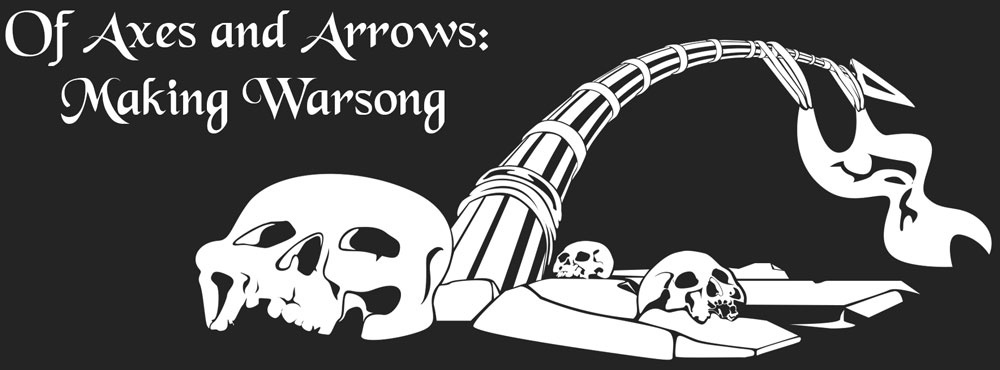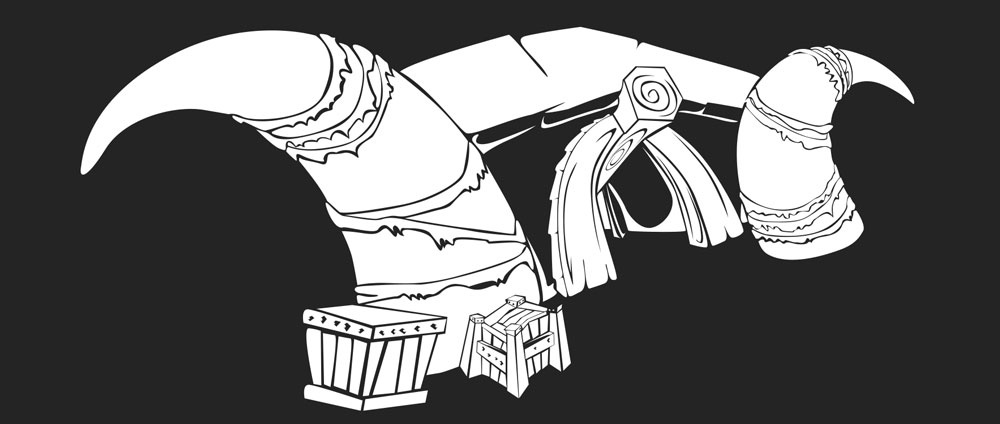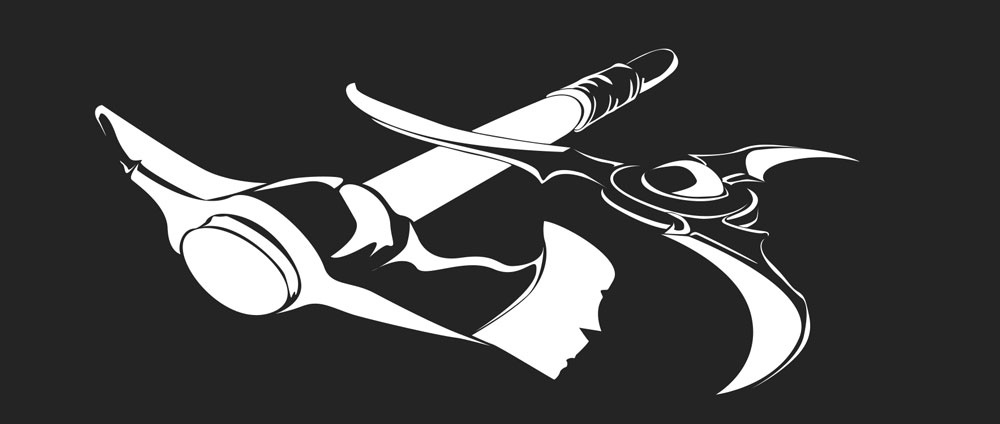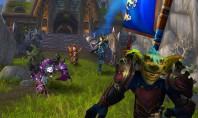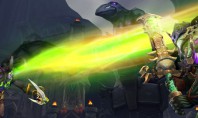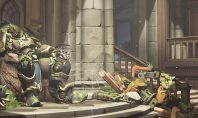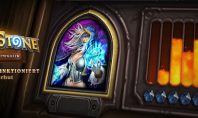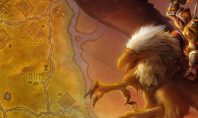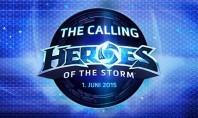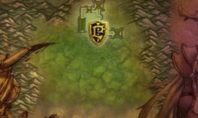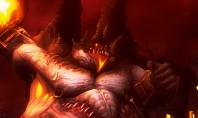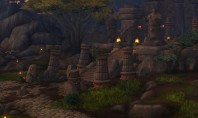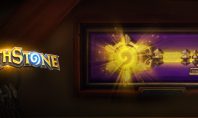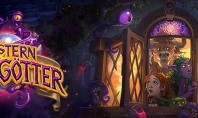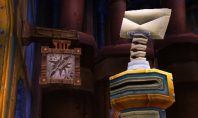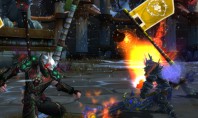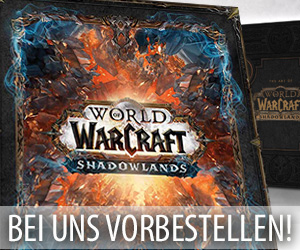WoW: John Staats spricht über die Entwicklung des PvPs
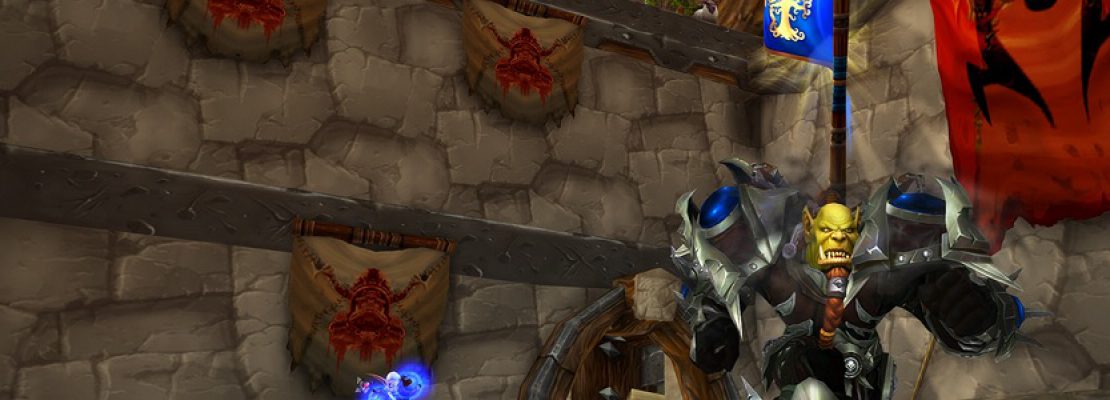
Nachdem die bekannte Plattform wowhead in der vergangenen Woche bereits einen ersten Bericht von dem früher als 3D Level Designer für Blizzard Entertainment tätig gewesenen Spieleentwickler John Staats veröffentlichten durfte, folgte in der vergangenen Nacht zur Freude vieler Fans von Vanilia WoW nun auch noch ein zweiter Beitrag dieser Art. Dieser nicht in dem derzeit über Kickstarter finanzierbaren Buch „The World of Warcraft Diary“ auftauchende Artikel dreht sich dabei dann über die zu Classic-Zeiten in World of Warcraft implementierten Schlachtfelder und liefert den Lesern eine Reihe von äußerst interessanten Informationen zu der Entstehung des PvPs in diesem Spiel.
Dieser informative Beitrag startet ganz am Anfang mit den ersten Plänen für das instanzierte PvP in World of Warcraft und reicht von diesem Zeitpunkt aus dann bis zu der zeitgleichen Veröffentlichung der Kriegshymnenschlucht und des Alteractals. Dabei geht John Staats unter anderem darauf ein, wie die Ideen für diese beiden Schlachtfelder entstanden sind, wie die Entwicklung dieser Inhalte abgelaufen ist, vor welche Probleme das Entwicklerteam gestellt wurde, warum die Erschaffung dieser Neuerungen so lange brauchte und wieso das klassische Alteractal im Gegensatz zu der Kriegshymnenschlucht so viele PvE-Elemente beinhaltete.
Wer sich für das PvP in World of Warcraft oder die Arbeit der Entwickler interessiert, der sollte sich folgenden Text unbedingt durchlesen.
Game elements often have a story behind them, and WoW’s capture the flag battleground, Warsong Gulch, is no exception. As I omitted the story behind the Scholomance, I left WG’s origins out of my book, The World of Warcraft Diary, because its narrative ended with the game’s launch, and, at that time, a capture the flag mode wasn’t on team 2’s radar.
After we launched WoW, the dev team was largely away on a much-needed vacation until January. Blizzard’s WoW offices were empty aside from a programmer or producer spending a few hours to upload a canned update or implement a quick hot-fix. As we trickled into work after the holidays, we were greeted with a host of art tasks, bugs, and balancing concerns. The project had already received several code-only patches that fixed show-stoppers, and its first art patch included a mid-level dungeon called Maraudon. A lot was going on.
As I explained in my book, team 2 had been champing at the bit for a player versus player zone, and shipping the game without one was a disappointment. We flagged the Gurubashi Arena to be a PvP area, but that was only a Band-Aid to the obviously absent feature. Successful as WoW was, it was unfinished. At the beginning of 2005, our worst-case schedule called for uploading a PvP zone in March, which would be four months after our launch. With spontaneous PvP battles erupting between Taren Mill and Southshore on our PvP servers, it seemed the dev team weren’t the only ones hungry to fight living opponents. A four month wait seemed like a long time. Many of the EverQuest gurus in the company were surprised our PvP servers were so full since it wasn’t a popular way to play EQ. There was a feeling that the top Blizzard designers had greatly underestimated the appeal of PvP interaction. To compound matters, there was little programming bandwidth available to work on PvP features, and frankly, the design department didn’t have a consensus of what should be done. The issue wasn’t that they didn’t know what to do, it was that everyone wanted to try different ideas. PvP could have been implemented in so many different ways, there wasn’t a team-wide quorum on what should be done first. Without broad support for a particular direction, it wasn’t frugal to assign engineers to the task yet; and we couldn’t anyway, not until all the game’s fires were put out. To anyone outside the design department, it appeared as if decision-making had stalled.
Testing Everyone’s Patience
If pressed, I would guess the inception for Alterac Valley came from Blizzard’s founder, Allen Adham, WoW’s lead designer until 2004. Whether it was originally his idea, or suggested to him by another team member, I cannot say, but a year before the game shipped, he expressed support for the idea of players participating in a Warcraft III battle. He proposed teams attacking one another’s base while surrounded by streams of NPC allies. It was similar to a Warcraft III mod, called Defense of the Ancients, that would give birth to League of Legends and other MOBAs many years later. Even at the time, Allen was under no illusions that the team had the bandwidth to support something so grand. He wanted Blizzard to spend enough time on PvP, after launch, to do it right. Even though Allen had left game development a year ago, the idea of a giant battle resonated with the team…until we began play-testing it.
Alterac Valley’s first playtests didn’t stand a chance because the scarcity of engineering support rendered its many systems unfunctional. The only new feature was the 40-player raid interface, however the devs who tested it (who never raided) were confused by the UI’s uselessness in a big battleground. Using it to heal proved fruitless, since allies were usually out of range. The scripting mechanics of the zone’s NPCs (who turned the tide of battle) were buggy, unbalanced, non-functional, or lacking UI visualization. To some, the very idea of NPCs contributing to a PvP battle was questionable–why were NPCs the heroes? The playtesters wondered, „Where were these NPCs?“ No one could find them. After the first test, the designers explained allied NPCs could be summoned by killing monsters in the rear of the battlefield, far away from the action. Even this logic was challenged, „Why would people want to kill monsters in a PvP zone?“ Grinding through monsters to push a faraway battle didn’t sound very fun, especially since there was no UI indicating how many resources were needed to summon things. The designers reasoned that it would be a way for non-PvPers to contribute to the battle; in theory, this would appeal to the wider audience, and slowly introduce non-PvPers to the intimidating playstyle. This was in character with Blizzard’s approach to features, always creating game mechanics for the broadest possible player base.
Testing was compounded by the fact that we couldn’t find eighty developers with enough time. Such coordination included getting everyone on the same internal build, waiting for the server to restart, and hot-fixing any crashes. For weeks, playtests were organized and cancelled after glitches prevented anyone from entering the zone. When a stable build was finally ready, the only guinea pigs available were either non-MMO savvy artists (who were unfamiliar with high-level spells), and the designers (whose keen awareness of class mechanics, exploits, and unbalanced abilities made them nigh-invulnerable).
The first working test was disastrous, albeit amusing. With only a couple dozen players on each side, participants scattered in every direction. With so few participants, the zone was far too big. When they died, they didn’t retrieve their corpse while in ghost-form, they resurrected at unfamiliar graveyards. On top of this confusion, the act of resurrection disoriented people because there was no zone map or minimap UI. Some couldn’t find allies or enemies, there was little communication between allies, and the only teamplay involved silently following one another in hopes that it might lead to some action. Post-test feedback in the conference area was uncomfortable. Unhappy playtesters expressed their disapproval to the designers–who were frustrated that preliminary opinions were turning against the zone’s concepts, before major features were working.
Development continued on the zone. New UI elements and functionality slowly crept into the build, but the instability of our servers torpedoed efforts to reorganize playtests. Weekly tests were scheduled and canceled (sometimes multiple times a week). Developers would receive emails from the producers requesting anyone who wasn’t working on mission-critical tasks to help out. If the tests weren’t postponed or canceled, follow-up instructions described the proper installation procedure and how to create and equip a high-level character. Anyone following these drills wouldn’t be able to connect to the server at the appointed time. After twenty or thirty minutes of waiting, the news inevitably spread that the test had been cancelled. After months of false alarms, these emails lost credibility to the extent that most devs learned to ignored them; or decline the invitation. While we waited for tech to catch up, the team’s morale sank to a new nadir. As with every shipping game, people move on. For various reasons, nearly half the team had left after WoW shipped (which was another reason why testing 80-player was hard).
After months of waiting for code to catch up, many team members yearned for a simpler PvP system; something with convenient graveyards that limited death-downtime. Some thought PvP should be about killing other players, not scripted events, NPCs, or monsters. One night, I noticed one of our newly hired artists on the team, Matt Milizia, was working on a symmetrical plot of land that looked like a base versus base battleground. It certainly wasn’t anything Matt would have been scheduled to do, he was an artist, not an exterior level designer. He built props for dungeons, which was why I had visited his office late in the first place–we were usually the only two people working late at night on our side of the building, and he usually had cool new goodies to look at, usually for Maraudon and Blackwing’s Lair. He was enthusiastic and prolific, an asset ninja, who always created more than was asked. Matt explained to me that he’d taught himself how to use wowedit’s landscaping tools to make a small PvP area with two graveyards facing one other. I recognized the patch of land as a capture the flag level and asked him if he that’s what he was making. He shrugged, „Sure, it could be a CTF map. It could be anything, really, as long as there’s close player interaction.“ I offered to help with supporting architecture and he accepted.
Regurgitating Designs
Because Matt and I were attempting to sell the designers on the idea that smaller battlegrounds were the way to kick off our PvP, we didn’t have time to iterate. Presenting a new game mode with problematic layouts wouldn’t push our argument forward. I needed a blueprint that worked. This was especially true because I had to make bases using two different architectural styles (orc and night elf). If something changed on one end, I needed to do the same to the other to maintain identical footprints. The only realistic approach would be reusing a proven design.
I had years of experience designing CTF levels. My 3D mapping roots came from making mods of the Quake engines. I’d built and distributed my own levels on the internet, like a virtual hobbyist, and some levels were good enough to get a job at Blizzard. Although I had four and a half years of CTF mapping experience before I joined WoW in 2000, making CTF maps was still very hard. Like all multiplayer maps, CTF levels needed environmental variation that promoted the use of different weapons. They needed close quarter combat, open area battlegrounds, and elevation changes. It was the level designer’s job to distribute the traffic, avoid stalemates, and minimize camping spots. Bottlenecks couldn’t be too strong, routes had to feel balanced, and the bases needed opposable exits (so attackers always had a chance to outflank defenders). Because CTF gameplay was very positional, their maps were prone to breaking down into stalemates, so they needed tons of testing and iteration.
When my mod team, Loki’s Minions CTF, switched to the Quake 3 engine, they encouraged me to remake one of my successful Quake 2 maps, called Disputed Territories. Doing a remake seemed like a good idea at the time, but I quickly realized the joy of level design was figuring things out. Since layout decisions were already made, building the same level again, in a different engine, felt like I was simply „coloring inside the lines.“ It was an artless, unchallenging, 300-hour chore. Nevertheless, I translated my Quake 2 level into a Quake 3 version–I called it Cement, Concrete and Stone. While the gameplay was tight, I left it out of my portfolio when I applied to Blizzard because it felt cheap. I’d learned my lesson and vowed, „I would never, ever remake a map!“ And here I was, five years later: I was not only remaking a level again, but I was redoing the same one.
Unpopular Decisions
Before Matt and I could finish our alternative to Alterac Valley, the word leaked about our enterprise. Two of our lead game designers, Tom Chilton and Jeff Kaplan, came by to check out our work. They seemed genuinely curious (designers were always eager to get their hands on new art assets), but the concern was that we wouldn’t we be able to do both modes, that it would it be too time-consuming for our programmers. At least Jeff and Tom liked what they saw. As a first-person shooter fan, Jeff Kaplan remarked he appreciated the sightlines–even if they didn’t apply to ranged spells.
As Matt and I had hoped, Warsong Gulch was prototyped with minimal programming. The first iteration was humble. Quest designers hacked-in temporary buffs that acted as placeholders for flags. There was no scoring or supporting UI, and the only alerts were scripted chat messages. Our gameplay was self-explanatory, easier to organize, and, as providence would have it, was tested on a stable build. CTF was immediately playable, and it was lauded by everyone participating in the first playtest–perhaps too much so. Some voiced opinions against moving forward with Alterac Valley–which agitated the designers who’d been working on it for months. To them, cancelling something that was still waiting for the engineering team to stabilize made no sense. Why cancel something that had barely been tested!? Ever the diplomat, Jeff reminded everyone that playtest feedback meetings were places where people should feel safe to express their opinions, even if they’re saying things that are unfair, harsh, or judgmental. Feedback meetings weren’t supposed to be for debates or decisions.
Resolutions were made in later meetings, when it was determined that, at the cost of pushing back the PvP update, the programmers would be given enough time to support both battlegrounds. Matt and I were dismayed to learn that subsequent CTF development had proceeded without us. I particularly wanted to be involved, given my experience with this kind of gameplay. Perhaps our presence would have made it harder for the designers to take ownership of the new battleground. I was puzzled that there were no plans for a damage powerup (i.e., quad damage) to break stalemates which, unfortunately, were common in CTF matches. The designers‘ reasoned that a damage powerup might devalue healing, and possibly turning away some character classes. Nor did I understand the need of a PvP reward system. Shouldn’t CTF just be fun enough that people will want to play it? I assumed the only incentive would be a ranking ladder, similar to battle.net, where bragging rights was its own reward. I was still new to MMO endgame dynamics, so perhaps I was a little naive.
The irony in choosing to remake my old layout was realized after it was playtested with polished code and UI. In general, geometry and level design weren’t as important to WoW PvP as they were in first person shooter games. This crystalized many months later, after Warsong was released, when we attempted to recreate a team elimination battleground, similar to a popular Quake mod called Rocket Arena. I spent one morning throwing together a multilevel coliseum, to see if we could capture the same gameplay. The test only lasted a couple minutes. It became immediately apparent that healing and the absence of one-shot-kills fundamentally changed player behavior. WoW PvP teams stayed together. In single-elimination games, no one cared about the layout, it was all about staying with the group. Attacking from behind was either impossible or yielded negligible advantages There was no reason to move through the map. Our game’s version of team deathmatch was simply teams standing their ground, waiting for the other side to attack. Thankfully, the capture the flag game mechanics were more dynamic, so my floorplans were, at least, minimally effective.
PvP battlegrounds were made available to the public eight months after WoW shipped (which was double our first estimate). Both Alterac Valley and Warsong Gulch went live in the same patch. Three months later they were followed by Arathi Basin, which used another familiar first-person shooter mechanic, capturing spawn locations (borrowed from team 2’s favorite game, the demo version of Battlefield 1942). The positive fan feedback from these battlegrounds was proof that the team had a strong model for PvP for many years to come.

